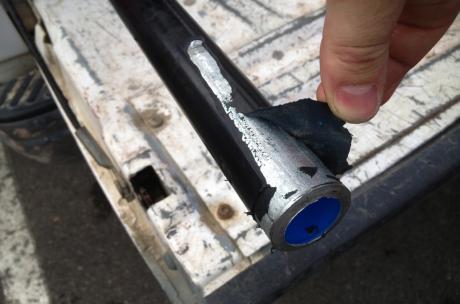Question
What caused the failure of the protective PVC coating shown in the photograph below?

Answer
It’s important to know that the PVC coating on this conduit did NOT fail in the field.
It failed because of inferior manufacturing and was delivered to the job site already in a failed condition.
In short — this is an example of premature product failure at its most extreme.
Technically, this represents a failure of PVC coating to adhere to the steel conduit substrate that it is supposed to protect from environmental and corrosive damage. Statistically, more than 70% of all coating failures result from adhesion failure. It’s visually obvious that this conduit was of no protective value in the water/wastewater application for which it was purchased.
To review in the most simplistic terms: when the coating sticks, the product works. When it doesn’t stick, the product fails. What specifically causes failure of this type to happen? Look at the shiny appearance of the exposed conduit. This is a clue that the surface of the conduit had not been properly prepared — before the PVC coating was applied — by removing all contaminants that may inhibit bonding of the coating to metal. The consequences? At the very least an end-user paid for an unusable product. More seriously, had this product been installed, it would have caused an array of costly risks associated with premature and significant product failure.